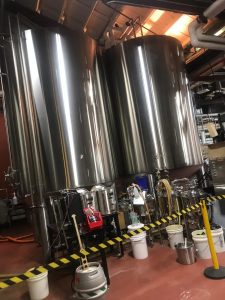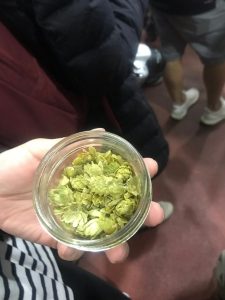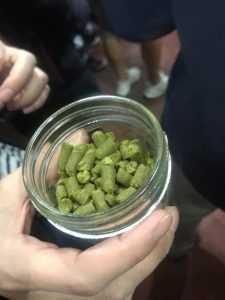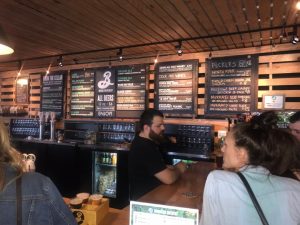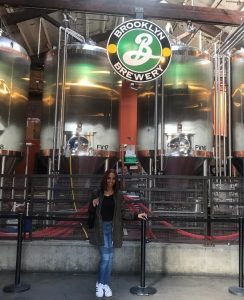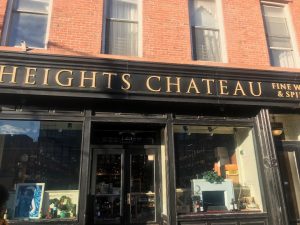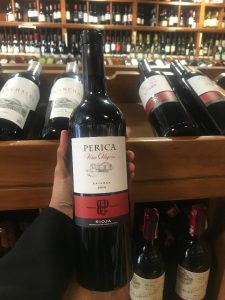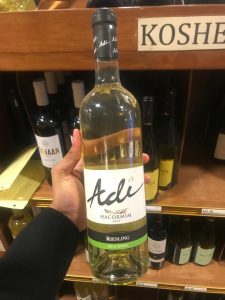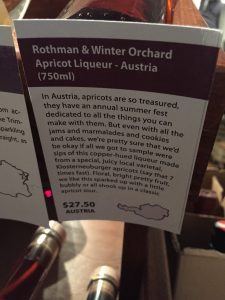Last Saturday, on April 27th, I visited the Brooklyn Brewery. I wasn’t as fortunate to have visited a vineyard during my break so I went with an alternative. Brooklyn Brewery is located in Williamsburg, Brooklyn. According to their website, on Saturdays, Brooklyn Brewery hosts free tours every half hour. The brewery only holds a certain number of people at a time so I waited in a very long line before being able to get in. I was able to attend a 4:30pm tour where the workers explain the brewing process of how beer is made.
Surprisingly, there weren’t too many locals on the tour. A lot of people on this tour were from out of the country: Japan, Brazil, Sweden . Our tour guide mentioned that Sweden is the second largest market in the beer industry; the five boroughs of New York, specifically Brooklyn being the largest. The first stop on the tour was the brew house, “where the magic happens”. In this brew house, they store their current brewing system as well as their old brewing system which isn’t operational because it works manually and it’s hard to work with it in the volume of beer they make daily. However, they do use it to store water.
The four major ingredients used to make beer is hops, barley, yeast and water. Ninety to ninety five percent of beer is just water. One thing that makes their beer so special is that the water that they get here in New York City comes from the Catskill Mountains and gets a lot of natural filtration. They don’t have to do a ton of treatments to the water. Malt is the process of germinated cereal grains. Most beers tend to be made with malted barley. The barley is grinded up and put through these travel pipes where it meets hot water almost as if making tea. What this does is activates enzymes in the grains that cause it to break down and release its sugars. Once this is all done you drain the water from the mash which is now full of sugar from the grains. This sticky, sweet liquid is called wort. It’s basically unmade beer, sort of like how dough is unmade bread.
The wort is then boiled while hops and other spices are added several times. According to Beeriety, hops are the small, green cone-like fruit of a vine plant. They provide bitterness to balance out all the sugar in the wort, provide flavor and also act a natural preservative. Hops are also responsible for the aromatics of beer.
Once the wort is done boiling and is cooled, strained and filtered. It is then put in one of the large brewing vessels and yeast is added to it for fermenting. The second stop of the tour was to the packaging hall and fermentation room. The tour guide explains that their are two big families of yeast used to make beer and they are ale and lager yeast. Ale yeast ferments very quickly, usually one to two weeks and ferments at a warmer temperature than lager yeast. Ale beers leaves behind flavor associated with the ale yeast itself such as fruity flavors, spicy flavors, banana and clove, etc. Lager comes from the word “lagern” which means to store and it typically takes a longer time to ferment, usually four to six weeks at a cooler temperature and more cleanly not leaving behind any flavors. It tends to be crisper. Basically the yeast eats up all that sugar in the wort and spits out carbon dioxide and alcohol as waste products.
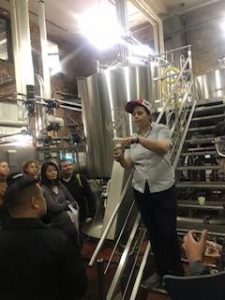
My tour guide was very knowledgeable on how beer is made despite only working at the brewery on the weekends for 3 months. However, she does make whiskey on the weekdays at another establishment and says you have to know how to make beer first before you know how to make whiskey
After the tour, we were directed towards the tasting room which wasn’t the typically tasting room I was expecting. It seems more like a lounge where people came in to buy beer and sat and hung out. Kids and pets were allowed in this area.
References
How Beer is Made | Beeriety. (n.d.). Retrieved from http://blog.beeriety.com/2009/07/06/how-beer-is-made/
Brewery, B. (n.d.). Visiting The Tasting Room : Brooklyn Brewery. Retrieved from https://brooklynbrewery.com/visit/visiting-the-brooklyn-brewery#_ga=2.9866230.214292393.1556916543-965157385.1556916543


